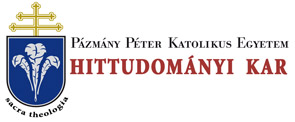Folia Theologica et Canonica 1. 23/15 (2012)
IUS CANONICUM - Szabolcs Anzelm Szuromi, Biblical Texts and Medieval Ecclesiastical Discipline up to the Decretum Gratiani
FOLIA THEOLOGICA ET CANONICA I (2012) 139-149 Szabolcs Anzelm Szuromi, O.Praem. BIBLICAL TEXTS AND MEDIEVAL ECCLESIASTICAL DISCIPLINE UP TO THE DECRETUM GRA TIANI* I. Biblical tradition and canonical legislation; II. Biblical texts and medieval ecclesiastical DISCIPLINE PRIOR THE GREGORIAN REFORM; III. FROM THE GREGORIAN REFORM UP TO THE DECretum Gratiane, Conclusion I. Biblical tradition and canonical legislation The Catholic Church, as the New People of God in the eschatological era of the New Covenant, works from her foundation within doctrinally and disciplinarily defined frameworks that are bound fundamentally and essentially to the person and teaching of Jesus Christ and to his act of founding the Church. The Church professes that she proclaims God’s teaching, whose content is defined by revelation. She proclaims it to a certain community that is dehned by the successors of the Apostles, that is, the bishops, who are endowed with a sacred power and mission that is derived from the founder of the Church. This conviction, which has characterized each era of Church History may be summed up in the doctrinal and disciplinary unity of the Church’s activity.1 Certain papal or ecumenical conciliar statements, and as well as the theological analyses of the Church Fathers, give us a clear picture of the specificity of the Church’s activity to foster the promotion of the salvation of souls. The individual, characteristically dogmatic statements demonstrate the integrity of the deposit of faith {depositum fidei), expressed by the various answers formulated in the light of Holy Scripture and Holy Tradition in response to the relevant questions of the different successive eras during the centuries, each answer building upon the other, having their foundation in the Church’s life of evangelizing and administering the sacraments. This characteristic integrity is that immutability * This article was written in the St. Michael’s Abbey of the Norbertine Fathers (Silverado, CA); supported by TÁMOP 4.2.2 and the OTKA K 106300 research projects. 1 Erdő, P., Theologie des kanonischen Recths. Ein systematisch-historischer Versuch (Kirchenrechtliche Bibliothek 1), Münster 1999. 100-101.
